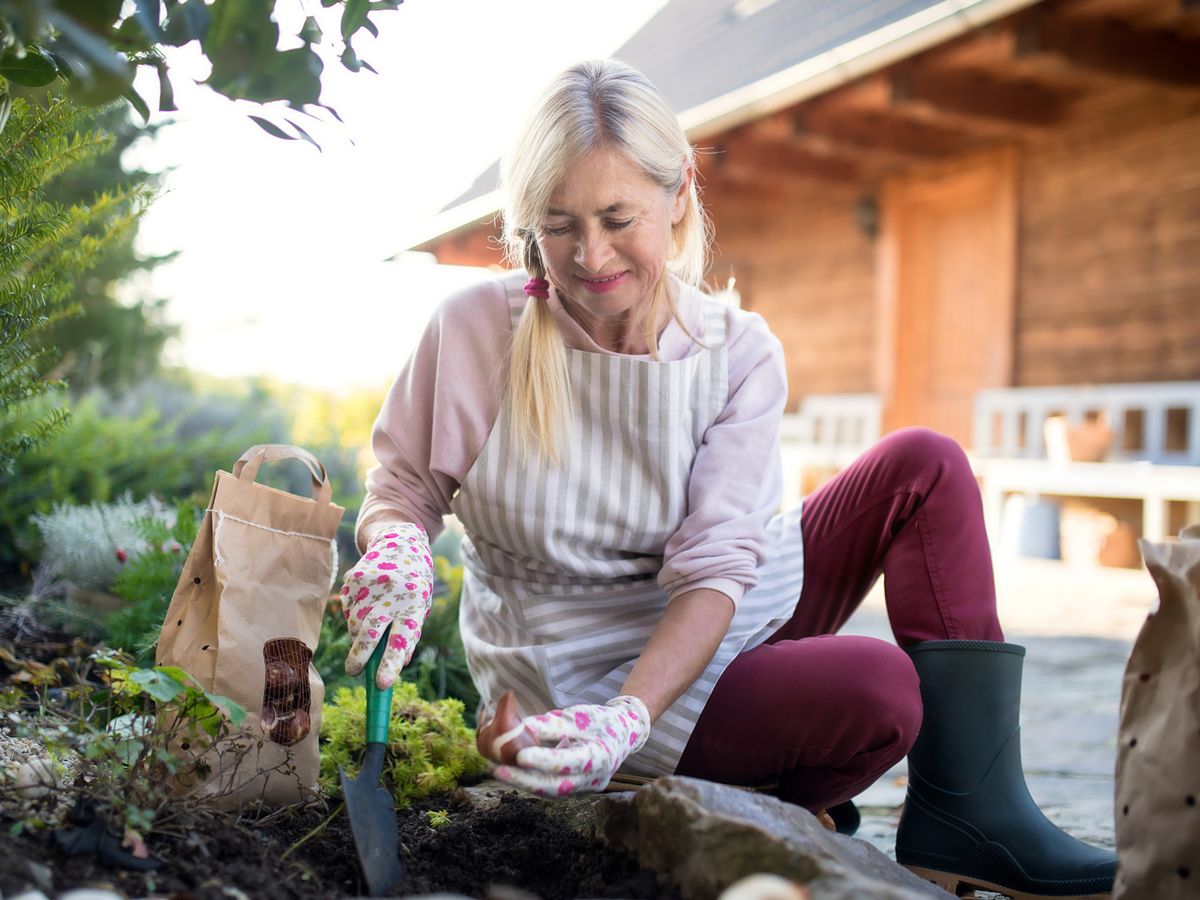Copyright mirror

As autumn sets in and sunny, warm days are few and far between, it's time to get your beloved outdoor spaces prepared for the long, cold winter months ahead. While experts recommend leaving some stems, dead growth and leaves behind to provide a place for local wildlife to shelter in as food is scarce, there are still essential maintenance tasks to complete. Certain plants need to be tidied so they have the best chance of vigorous growth next year, fruits should be harvested and stored and you can even plant some vegetables ready for an early spring crop. You might not be mowing the lawn anymore but the time is ripe to lay new turf or repair damaged areas. With this in mind, experts at The Royal Horticultural Society (RHS) have shared their top 10 garden jobs to tick off before October is over and the winter frosts set in. You may want to tidy up the general appearance of your garden by cutting back any perennials (plants that last longer than two years). Giving them a trim after they have finished flowering in autumn can help improve flowering in the following year. Use a knife, shears or secateurs, to cut back to the base or crown of the plant. Separate and burn any diseased material. Leaving some stems provides food and habitat environments for wildlife. For this reason some gardeners choose to leave cutting back until spring - this also gives the garden more interest and structure during the bare winter months. Every two or three years it's advisable to divide your perennials to ensure they are healthy and grow well. It also means you can increase the number of plants you have. Divide more regularly if you want extra but it works best when they are not actively growing. Ensure they are well watered afterwards. Leave any delicate or tender plants until spring and use a garden fork to work outwards to limit damage. Shake off excess soil so the roots are visible and replant. Plants which are sensitive to the cold and frost should be moved into a greenhouse or conservatory for overwintering. Exotics and tropical plants can be relocated indoors after spending the summer outside. The ideal time to do it is when temperatures drop below 12-15C, so keep an eye on the weather forecast for your area and move them in time. Remove border plants with a fork or spade and carefully leave as much of the root as undisturbed as possible. Shake off soil, trim stems and repot with potting compost. Plants that are already potted should be trimmed and dead or diseased leaves can be removed. Make sure to check for any pests such as vine weevil. Rhubarb is very easy to grow and hardy in even the coldest places. In fact, it benefits from being exposed to cold. Established plants should be divided in autumn or winter every five years or so to promote healthy growth. Re-plant the sections you remove or give them to friends to enjoy. The stems and leaves will die back in winter and regrow in spring. If kept in the right environment, fruit from your garden can be stored and enjoyed for anything between two weeks or a few months. You need a space that has a temperature of 4-7C so a shed, garage or cellar could be ideal. Make sure it is free from rodents, well ventilated, dark, slightly humid, and frost free. Use containers that will allow air to circulate above and through the sides, such as crates, shallow wooden boxes or polystyrene trays. Only store blemish and bruise free fruits that have been picked just under ripe. It's also best to lay in a single layer so they aren't touching each other. Cabbages are healthy, tasty and easy to grow. Different varieties can be harvested throughout the year but spring cabbages can be sown in late summer and planted out in autumn. Choose a plot that is sunny with fertile, free draining soil where cabbages haven't been previously grown in the last couple of years. Avoid waterlogged areas for overwintering varieties and check the PH levels of soil are above 6. Climbing roses - those that flower all summer and into autumn - will become a mess with very few flowers if they aren't pruned. To ensure they grow vigorously and flower abundantly, cut back in late autumn or winter. It's easier to do this when the plant isn't in leaf and you can see the branches. Shorten or tie long shoots to stop them breaking in high winds and remove dead, diseased or weak shoots. Old woody stems can be cut to the ground so that only around six young stems remain and can be fixed to supports. Shorten side shoots and prune tips back from one third to one half. Mowing is generally recommended once a week or fortnight, depending on growth and conditions. You should never mow if the ground is very soft, wet or frozen. Therefore autumn marks the last opportunity to tidy up the grass before the weather makes it impossible. Mowing in winter isn't necessary unless it's a particularly mild season and the grass is still growing. If this is the case, mow occasionally and set your mower to a high cut setting. Mid-autumn is the perfect time to lay turf to create a new lawn or repair damaged areas of an existing one. Little mowing is needed so it has time to root in and remain undisturbed. The wetter weather also means the turf shouldn't need watering as it would in early spring to early autumn when it would struggle to establish. Increase the number of plants in your garden for free by collecting and storing your own seeds. They can be extracted from all manner of plants but seedheads can ripen quickly so keep an eye on them before they are dispersed naturally. It's generally set after about two months of flowering. Ensure the plants you take them from are healthy and vigorous so germination stands a better chance. Collect seedheads on a dry day as soon as they ripen and turn to brown, red or black.



